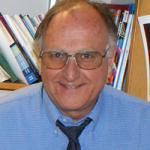
- Title Emeritus Associate Professor
During my time at BUSM, I have taught medical students in anatomy, physiology, and pathology courses. Over the past seven years, I have participated in teaching GMS BI 555/755, a biochemistry course open to graduate students from all basic science departments. In this course, I teach fundamental concepts and practical applications of light and electron microscopy for experimental research. My instruction ranges from classical histological techniques perfected in the nineteenth century to the most recent developments in immunohistochemistry and histomorphology, including TUNEL assays and in situ hybridization. I teach the students the concepts behind each technique and its application to experimental questions they are likely to face, and also give them the tools to make their own critical evaluation of data generated by these methods.
In addition to formal lectures and associated classroom teaching, I have provided individualized instruction to graduate students, postdocs, technicians, undergraduates, special students, fellow faculty members, and visiting scientists in my laboratory. Over the years there have been literally hundreds of such instances, from brief consultations of few minutes in duration to collaborative efforts spanning years. I have given freely of my time to all who have entered my lab with experimental questions that could be answered by the anatomical and related techniques at my disposal. I have concentrated my efforts on helping graduate students and postdocs in the Biochemistry department. My help has included everything from tissue preparation to photography for publication. I have spent an enormous amount of time and effort teaching people how to fix, embed, section, and image tissue from experimental animals, cultured cells, and human samples. I have taught students at various levels how best to use fluorescent, phase-contrast, and polarizing light microscopes, and this has extended to electron microscopy, both transmission and scanning. I developed and perfected in situ hybridization techniques with one set of students and faculty members, and then made my expertise in this technology available to subsequent lab groups who needed it. I have made critical contributions of this nature to the thesis work of a dozen doctoral candidates in the Biochemistry department alone in the past seven years. I have also taught, trained, and guided postdocs, master students, students from CityLab, and technicians.
In addition, I employed the electron microscope to detect and localize beta-galactosidase expression in lung tissue, vascular tissue, and platelets. The introduction of the electron microscope to precisely localize beta-galactosidase expression demonstrates a highly innovative scientific approach that I introduced to the Biochemistry Department faculty and to Ph.D. candidates.